Diamond Types and Their Colors
Diamonds are crystalline forms of carbon known for their unparalleled hardness, brilliant luster, and extraordinary optical properties. Formed under high-pressure and high-temperature conditions deep within the Earth’s mantle, diamonds are composed primarily of carbon atoms arranged in a crystal lattice structure. This unique arrangement contributes to their exceptional physical and chemical properties, making them highly valued as gemstones and industrial materials.

Understanding the various types and colors of diamonds is crucial for several reasons. From a gemological perspective, it aids in the assessment of a diamond’s quality, rarity, and value. Different diamond types and colors also provide insights into the geological conditions and processes that led to their formation. Additionally, the study of diamond types and colors has significant implications for the diamond industry, influencing mining practices, market trends, and consumer preferences. Knowledge in this area helps gemologists, jewelers, and consumers make informed decisions regarding diamond selection and appraisal.
Contents
- Overview of the Diamond Formation Process
- Types of Diamonds
- Natural Diamonds
- Synthetic Diamonds
- Treated Diamonds
- Diamond Colors
- Colorless Diamonds
- Fancy Color Diamonds
- Brown Diamonds
- Black Diamonds
- Other Rare Colors
- Factors Affecting Diamond Color
- Color Grading and Valuation
- Geological Significance of Diamond Colors
- Colorless Diamonds
- Fancy Color Diamonds
- Brown Diamonds
- Black Diamonds
- Other Rare Colors
Overview of the Diamond Formation Process
Diamonds form deep within the Earth’s mantle, approximately 140 to 190 kilometers below the surface, where temperatures range from 900 to 1300 degrees Celsius and pressures reach between 45 and 60 kilobars. Carbon-containing minerals undergo transformation under these extreme conditions, resulting in the formation of diamonds. Over millions of years, volcanic activity brings these diamonds closer to the Earth’s surface through kimberlite and lamproite pipes. These geological formations are subsequently mined to extract diamonds, which are then processed and cut for use in jewelry and industrial applications. The journey from deep Earth carbon to a polished diamond is a testament to the natural processes that create these extraordinary gemstones.
Types of Diamonds
Natural Diamonds
 Diamonds in the rough, note the regular octahedral forms and trigons (of positive and negative relief) formed by natural chemical etching. Photo credit: Wikimedia.
Diamonds in the rough, note the regular octahedral forms and trigons (of positive and negative relief) formed by natural chemical etching. Photo credit: Wikimedia.
Formation Process
Natural diamonds are formed deep within the Earth’s mantle, typically at depths ranging from 140 to 190 kilometers. The process involves carbon atoms undergoing crystallization under extreme conditions of high pressure (45-60 kilobars) and high temperature (900-1300 degrees Celsius) over millions of years. Volcanic eruptions then bring these diamonds closer to the Earth’s surface through kimberlite and lamproite pipes.
Locations Where They Are Found
Natural diamonds are found in various locations worldwide, with major deposits in countries such as Russia, Botswana, Canada, Australia, and South Africa. The most famous diamond mines include the Argyle mine in Australia, the Jwaneng and Orapa mines in Botswana, and the Mir and Udachnaya mines in Russia.
Characteristics and Properties
Natural diamonds are renowned for their exceptional hardness (10 on the Mohs scale), brilliant luster, and ability to refract light, resulting in their characteristic sparkle. They are typically transparent but can exhibit a range of colors, including yellow, brown, blue, pink, and even rare red, depending on the presence of impurities and structural anomalies. Natural diamonds are graded based on the “Four Cs”: carat, cut, color, and clarity, which determine their value and quality.
Synthetic Diamonds
 Diamonds on a black cloth background
Diamonds on a black cloth background
Methods of Creation
- High Pressure High Temperature (HPHT): This method simulates the natural conditions under which diamonds form by subjecting carbon to high pressures and temperatures in a press. HPHT diamonds can be created in a matter of weeks.
- Chemical Vapor Deposition (CVD): This technique involves placing a carbon-containing gas (such as methane) in a vacuum chamber and applying heat, causing the gas to break down and carbon atoms to deposit onto a substrate, forming a diamond layer by layer. CVD diamonds can be produced at relatively lower pressures and temperatures compared to HPHT.
Uses in Industry vs. Jewelry
Synthetic diamonds have a wide range of industrial applications due to their hardness and thermal conductivity, including cutting, grinding, drilling, and in electronic devices. In the jewelry industry, synthetic diamonds are increasingly popular as they offer a more affordable and ethically sourced alternative to natural diamonds. They are virtually indistinguishable from natural diamonds in terms of appearance and chemical composition.
Comparison with Natural Diamonds
While synthetic diamonds share the same physical and chemical properties as natural diamonds, they can often be identified through advanced gemological testing that reveals differences in their growth patterns, trace element content, and inclusions. Synthetic diamonds tend to be more consistent in quality and can be produced with fewer impurities and defects. However, natural diamonds are typically valued more highly due to their rarity and the historical and emotional significance associated with them.
Treated Diamonds
 Treated Diamonds – CMR Diamonds
Treated Diamonds – CMR Diamonds
Types of Treatments
- High Pressure High Temperature (HPHT): This treatment can alter the color of a diamond, making yellow or brown diamonds colorless or enhancing their color.
- Irradiation: This process involves exposing diamonds to radiation, which changes their color. This is often followed by annealing (heating) to achieve the desired hue.
- Coating: Thin layers of materials are applied to the surface of diamonds to enhance their color or improve their appearance.
Purpose of Treatments
The primary purpose of treating diamonds is to enhance their aesthetic qualities, such as color and clarity, making them more appealing and marketable. HPHT treatment can turn low-value brown diamonds into more desirable colorless or fancy-colored diamonds. Irradiation and coating can produce vibrant colors not typically found in natural diamonds.
Detecting Treated Diamonds
Detecting treated diamonds requires advanced gemological equipment and expertise. Techniques such as spectroscopy, microscopy, and X-ray fluorescence can reveal treatment signatures, such as unusual color zoning, surface coatings, and changes in the diamond’s internal structure. Professional gemological laboratories issue certification reports that disclose any treatments a diamond has undergone, ensuring transparency and helping buyers make informed decisions.
Understanding the differences between natural, synthetic, and treated diamonds is essential for gemologists, jewelers, and consumers alike, enabling them to appreciate the unique qualities and value of each type.
Diamond Colors
Colorless Diamonds

Colorless diamonds, often referred to as white diamonds, are the most traditional and popular type of diamonds used in jewelry. They are graded on a scale from D (completely colorless) to Z (light yellow or brown). The absence of color in these diamonds allows the maximum amount of light to pass through, creating the dazzling sparkle that diamonds are famous for. Colorless diamonds are highly sought after for their purity and brilliance.
Fancy Color Diamonds

Fancy color diamonds are diamonds that exhibit intense and distinct colors. Unlike colorless diamonds, fancy color diamonds are graded based on the intensity and distribution of their color. These diamonds are rare and often more expensive than their colorless counterparts. Fancy colors can range from yellow, brown, blue, green, pink, orange, purple, to red. The color in these diamonds is typically caused by impurities or structural anomalies within the crystal lattice.
Yellow Diamonds

Yellow diamonds, also known as canary diamonds, get their color from the presence of nitrogen within the diamond’s structure. The intensity of the yellow color can range from faint to vivid, with vivid yellow diamonds being the most valuable.
Blue Diamonds
 The 29.6-carat blue diamond which was recovered at the Cullinan Diamond Mine near Pretoria, South Africa.
The 29.6-carat blue diamond which was recovered at the Cullinan Diamond Mine near Pretoria, South Africa.
Blue diamonds owe their color to the presence of boron. These diamonds are extremely rare, with the most famous example being the Hope Diamond. Blue diamonds can range in color from light blue to deep blue.
Green Diamonds

Green diamonds are colored by exposure to natural radiation, which alters the diamond’s crystal lattice. The color can vary from faint green to vibrant green. Naturally occurring green diamonds are quite rare and highly prized.
Pink and Red Diamonds

A pink diamond from Argyle, Australia.
Pink diamonds are among the most sought-after and valuable fancy color diamonds. The cause of their color is not entirely understood but is believed to be due to changes in the diamond’s crystal structure. Red diamonds are even rarer than pink diamonds and are incredibly valuable due to their scarcity and unique hue.
Brown Diamonds

Brown diamonds are the most common type of fancy color diamonds and are often referred to as “champagne” or “chocolate” diamonds. Their color can range from light brown to deep cognac, and they are more affordable than other fancy color diamonds. Brown diamonds get their color from a variety of factors, including the presence of nitrogen and plastic deformation of the crystal lattice.
Black Diamonds

Black diamonds, also known as carbonado, are unique due to their opaque appearance and black color. The color is caused by a high concentration of graphite or other inclusions within the diamond. Black diamonds are often used in bold and unconventional jewelry designs.
Other Rare Colors
In addition to the more commonly known colors, diamonds can also occur in other rare colors such as orange, purple, and grey. These colors are extremely rare and are usually highly prized by collectors and connoisseurs.
Factors Affecting Diamond Color
Several factors influence the color of a diamond:
- Impurities: The presence of elements such as nitrogen, boron, or hydrogen can affect the color of a diamond.
- Crystal Lattice Distortions: Structural anomalies or distortions in the crystal lattice can result in various colors.
- Radiation Exposure: Natural radiation can alter the color of a diamond, particularly in green diamonds.
Color Grading and Valuation
The color of a diamond significantly impacts its value. Colorless diamonds are graded on a D-to-Z scale, with D being the most desirable and valuable. Fancy color diamonds are graded based on the hue, tone, and saturation of their color. The more intense and pure the color, the higher the value of the diamond. Professional gemological laboratories, such as the Gemological Institute of America (GIA), provide certification and grading reports that detail the color characteristics of a diamond, aiding in its valuation and appraisal.
Understanding diamond colors and their grading is essential for anyone involved in the diamond industry, from miners and gemologists to jewelers and consumers, enabling them to appreciate and evaluate the beauty and uniqueness of each diamond.
Geological Significance of Diamond Colors

The color of a diamond is not just an aesthetic feature but also provides valuable insights into the geological history and formation conditions of the stone. Different colors in diamonds result from various factors, such as the presence of trace elements, crystal lattice defects, and interactions with natural radiation. By studying these aspects, geologists and gemologists can gain a deeper understanding of the Earth’s geological processes and the environment in which diamonds form.
Colorless Diamonds
Colorless diamonds, which are graded on a D-to-Z scale, indicate a relatively pure carbon crystal structure with minimal impurities or defects. The absence of color suggests that these diamonds formed in conditions with low levels of nitrogen or other trace elements. Studying colorless diamonds helps geologists understand the high-pressure, high-temperature environments of the Earth’s mantle where such pure carbon structures can form.
Fancy Color Diamonds
Fancy color diamonds are significant for their geological clues about the Earth’s deep interior and surface processes. The presence of specific colors is often tied to trace elements and environmental factors during the diamond’s formation and subsequent journey to the Earth’s surface.
Yellow Diamonds
Yellow diamonds get their color from nitrogen atoms that replace carbon atoms in the diamond’s crystal lattice. The distribution and concentration of nitrogen within the diamond can provide information about the mantle’s composition where the diamond formed. Studying yellow diamonds helps geologists understand the nitrogen cycle in the Earth’s mantle and the geochemical processes involved.
Blue Diamonds
Blue diamonds are colored by the presence of boron, an element that is rare in the Earth’s mantle. The formation of blue diamonds requires specific geological conditions where boron is available. These diamonds often form at greater depths than most other diamonds, providing insights into the deep mantle’s composition and the subduction of oceanic crust, which may introduce boron into the mantle.
Green Diamonds
Green diamonds are colored by natural radiation that causes structural changes in the diamond’s crystal lattice. The exposure to radiation usually occurs near the Earth’s surface or in uranium-rich rocks. Green diamonds help geologists understand the effects of radiation on minerals and the geological history of the areas where these diamonds are found.
Pink and Red Diamonds
The color in pink and red diamonds is due to plastic deformation of the crystal lattice. These colors suggest significant geological activity and intense pressure changes during the diamond’s formation and transport to the surface. Studying these diamonds provides insights into tectonic processes and the stresses experienced by rocks deep within the Earth.
Brown Diamonds
Brown diamonds, which are the most common type of fancy color diamonds, owe their color to a combination of factors including nitrogen impurities, plastic deformation, and complex structural defects. The presence of brown diamonds in specific geological settings can provide information about the stress and deformation history of the Earth’s crust in those regions.
Black Diamonds
Black diamonds, or carbonados, contain high concentrations of graphite and other inclusions. Their unique formation process, possibly involving high-energy impacts or supernova explosions, suggests a different origin compared to other diamonds. The study of black diamonds offers a window into rare and extreme geological events that might have contributed to their formation.
Other Rare Colors
Diamonds of other rare colors, such as orange, purple, and grey, can also provide significant geological information. These colors typically result from unique combinations of trace elements and environmental conditions, offering further insights into the diverse processes that occur within the Earth’s mantle and crust.

The study of diamond colors is a valuable tool for geologists and gemologists, providing a deeper understanding of the Earth’s geological processes and the conditions under which diamonds form. By analyzing the trace elements, structural defects, and radiation exposure that contribute to diamond colors, scientists can reconstruct the geological history and environmental conditions of the Earth’s mantle and crust. This knowledge not only enhances the appreciation of diamonds as gemstones but also contributes to the broader understanding of Earth’s geology.
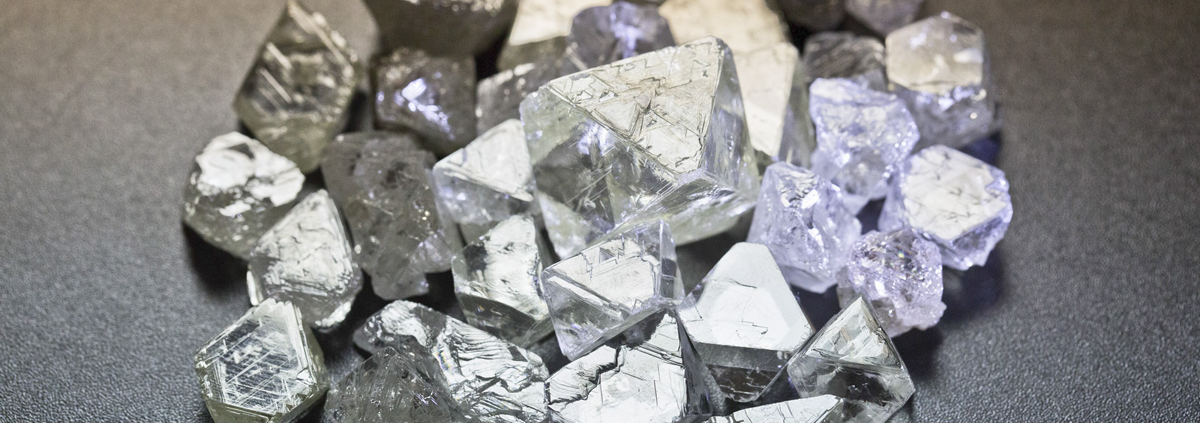
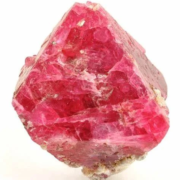
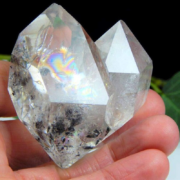
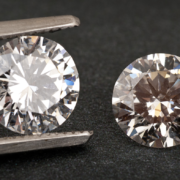
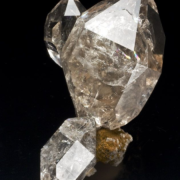
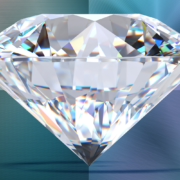
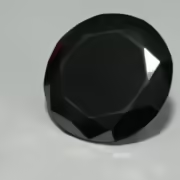


Leave a Reply
Want to join the discussion?Feel free to contribute!